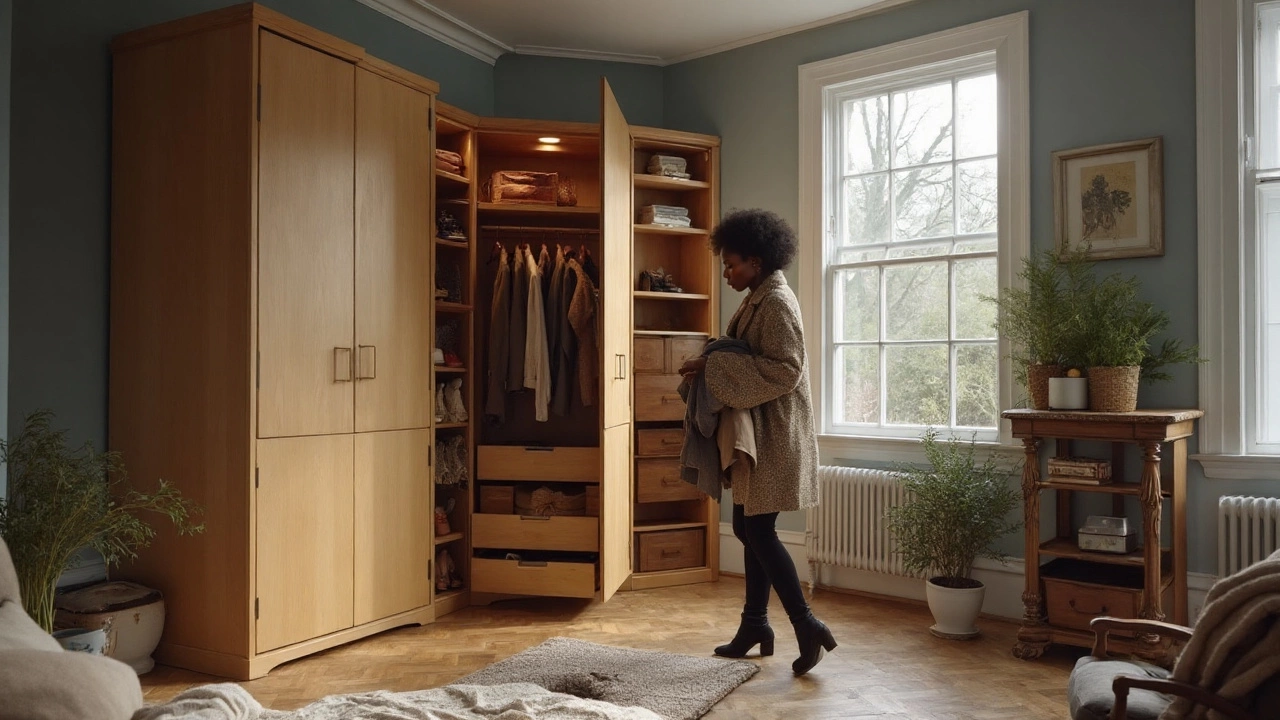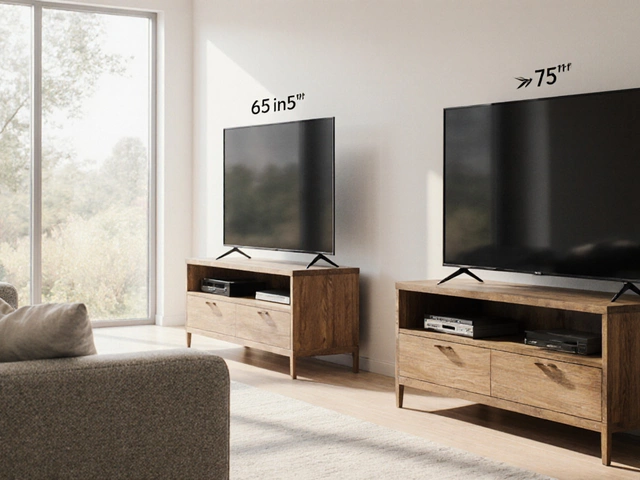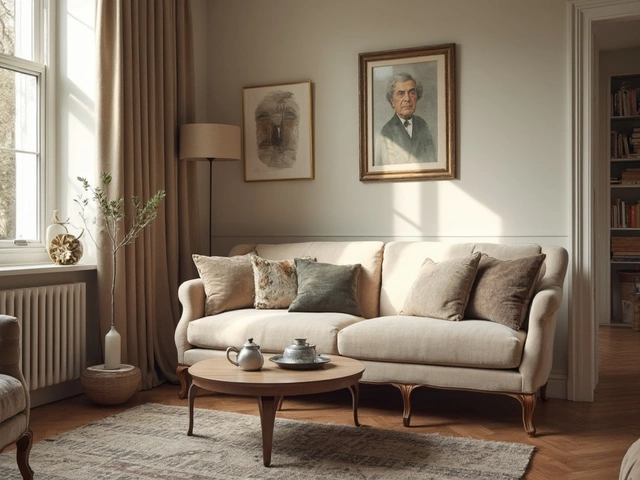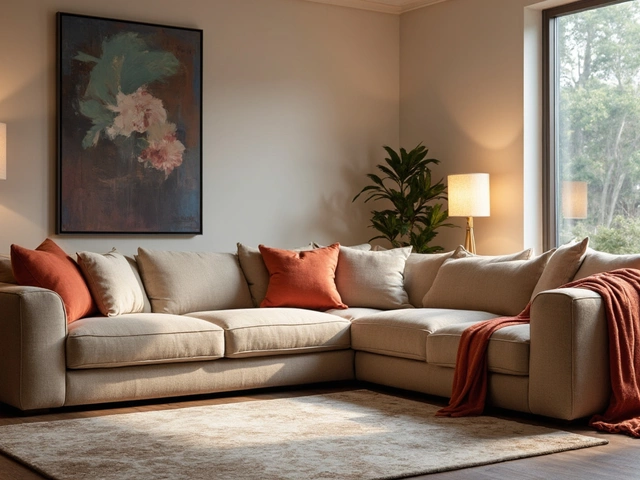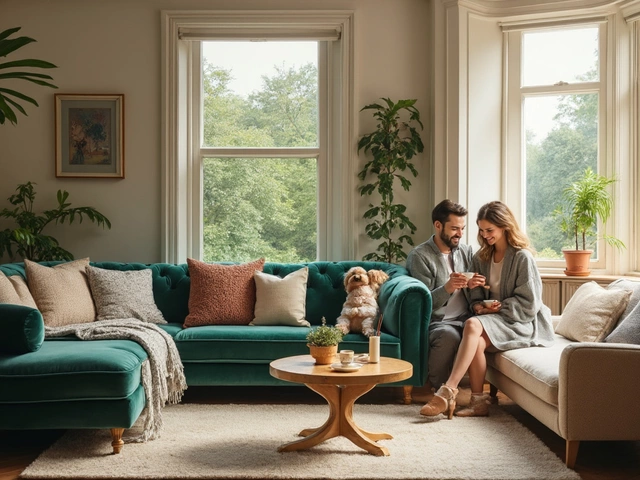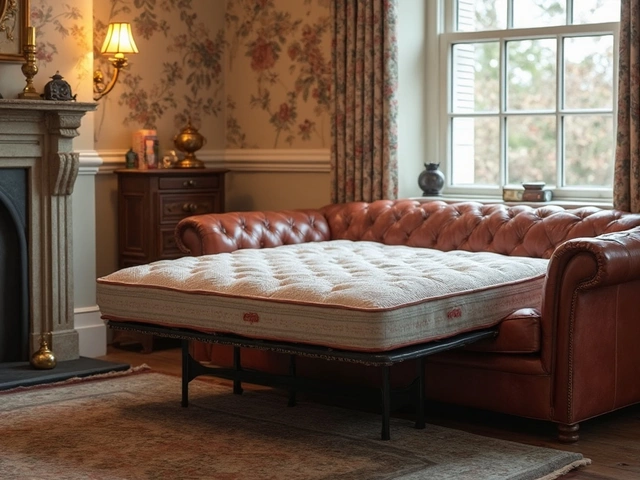Think a wardrobe and an armoire are the same? Close, but not quite. The difference affects how much you can store, whether doors clear your bed, and if the piece looks at home in your space. If you rent in a tight Auckland apartment or you live in a villa with high ceilings, getting this right saves money, time, and a lot of back-and-forth with delivery crews.
What you’re here to do:
- Get a clear, plain-English difference between a wardrobe and an armoire.
- Know which one fits your room, style, and storage needs.
- Learn how to measure and avoid door swing and ceiling clearance mistakes.
- Pick materials, finishes, and layouts that last in a New Zealand home.
- Walk away with a quick checklist and answers to the common follow-ups.
TL;DR
- Wardrobe: modern, often modular storage for clothes; can be built-in or freestanding; sliding or hinged doors; mirrors and drawers are common.
- Armoire: freestanding cabinet with hinged doors, classic furniture look, usually solid wood; more decorative and often heavier.
- Function: wardrobes maximise organised hanging + shelving; armoires shine as statement pieces and flexible storage (clothes, linen, even media).
- Space: wardrobes can be wide and shallow with sliding doors; armoires need door swing clearance and delivery access.
- Tip: small rooms or rentals → wardrobe; character homes or statement furniture → armoire.
Wardrobe vs Armoire: what they are and when each wins
Here’s the clean distinction. A wardrobe is a clothes storage unit designed around efficient hanging, shelving, and drawers. It can be built into the wall or freestanding. A wardrobe is today’s practical choice for most bedrooms. An armoire is a specific style of freestanding cabinet that hails from French furniture traditions-usually two tall hinged doors, a solid wood build, and a more decorative silhouette. Many armoires began life as all-purpose cupboards before closets were common.
Language can blur things. In British and Kiwi usage, “wardrobe” often means any tall clothes cabinet. In North America, “armoire” signals a freestanding cabinet with doors, and “closet” means a built-in. Retailers also mix terms in product names. So focus on construction, doors, and interior layout, not just the label on the tag.
How they differ in daily use:
- Doors: wardrobes may use sliding doors (great in tight rooms) or hinged doors. Armoires are almost always hinged. Hinged doors need space to swing-plan for about the full door width in front.
- Interior: wardrobes often split space into hanging sections, shelves, and drawers. Armoires lean toward shelves plus one hanging rail or a removable shelf, and sometimes a pair of interior drawers.
- Style: wardrobes are chameleons-gloss, matte, timber veneer, mirrors. Armoires are character pieces-mouldings, panelled doors, crown tops, and warm wood tones.
- Assembly: many wardrobes ship flat-pack and assemble in-room. Armoires may arrive as one large piece or major sections; they’re heavier and trickier to move.
- Longevity: a good armoire can be a lifetime buy and even a family heirloom. Modular wardrobes let you swap interiors or add doors later as needs change.
If you came searching for a crisp line to settle wardrobe vs armoire, that’s it: function-first system (wardrobe) versus furniture-first cabinet (armoire).
Typical dimensions you’ll see in NZ stores and makers:
- Depth: 55-65 cm for both, with 60 cm a safe depth for adult hangers. Anything under ~52 cm can crush sleeves.
- Height: 180-240 cm for wardrobes; 170-220 cm for armoires. Many Kiwi ceilings are ~2.4 m, so measure cornices and ceiling sag points.
- Width: wardrobes run from single-door 50-60 cm modules to 300+ cm with multiple doors. Armoires typically sit in the 90-150 cm range.
Materials and care:
- Solid wood armoires (oak, ash, pine, kauri if antique) give weight and repairability. Veneered wardrobes on plywood or MDF reduce cost and keep panels stable.
- Look for FSC certification on timber to support responsible forestry. It’s widely available in 2025 and worth asking about.
- Kiwi humidity can swell doors. Keep indoor relative humidity near 40-60% (BRANZ guidance aligns with this comfort range). Use gentle ventilation or a small dehumidifier in winter.
Safety heads-up: tall furniture can tip. The New Zealand Earthquake Commission (EQC) recommends securing tall units to studs. Many wardrobes include anti-tip brackets. If not, buy a set and install it. It’s a 10-minute job that can protect kids and keep your furniture upright during a shake.
| Feature | Wardrobe | Armoire |
|---|---|---|
| Main purpose | Optimised clothes storage with modular options | Statement cabinet; flexible storage (clothes, linen, media) |
| Doors | Sliding or hinged; mirrors common | Hinged only; usually solid panels |
| Interior layout | Mix of long/short hanging, shelves, drawers | Shelves plus one hanging rail or removable shelves |
| Style | Modern/minimal to classic; blends into rooms | Decorative, traditional, often carved or panelled |
| Depth (typical) | 55-65 cm | 55-65 cm |
| Width (typical) | 60-300+ cm (modular) | 90-150 cm (fixed) |
| Assembly | Often flat-pack; assembled in-room | Often pre-assembled or large sections; heavier to move |
| Best for | Small rooms, rentals, systematic storage | Character homes, feature furniture, flexible use |
| Cost range (NZ, 2025) | $400-$3,000+ depending on size/finish | $800-$5,000+ depending on timber/workmanship |

Measure, choose, and avoid regret: steps, checklists, and real-world tips
Use this quick path to the right piece the first time.
- Map the wall and the walkways
Measure width, floor skirting depth, and ceiling height at multiple points. Old villas and new apartments alike can be out by a few millimetres, which matters for tall units. Note power points, switches, window sills, and heaters. - Check door clearance
If you want hinged doors, you need swing space. Add at least the door width in front; add more if a bed sits opposite. For sliding wardrobes, confirm the track overlap doesn’t block daily-use sections. - Confirm depth for hangers
Adult hangers need about 55-60 cm internal depth. If you’re looking at a shallow “cupboard,” test with a hanger in-store if you can. - Plan the interior around your clothes
Count shirts, long dresses, suits, knitwear, and shoes. A simple split works: 60% hanging, 30% shelves, 10% drawers for most adults. If you work from home in tees and jeans, shift more to shelves. - Pick doors for the room
Small room or bed close to the unit → sliding doors. Room to spare and you want a premium feel → hinged. Armoires are hinged; make sure the opening path is clear. - Choose materials you can live with
Solid wood looks rich and can be refinished; it’s heavy and pricier. Veneer on plywood gives a stable, natural look at lower cost. Laminates resist scuffs in kids’ rooms. Ask about FSC timber and low-VOC finishes. - Check delivery path
Measure stairwells, tight turns, lifts, and doors. Pre-assembled armoires may not make a hairpin turn in a narrow stair. Flat-pack wardrobes avoid that pain. - Anchor it
Use the wall strap or a metal bracket fixed to a wall stud. EQC guidance is clear: secure tall furniture. Your installer can do this while assembling. - Handle moisture
In damp winters, keep airflow behind the unit. Leave a finger’s gap from the wall. A small desiccant pack or dehumidifier stops musty drawers.
Quick measuring checklist (print or screenshot):
- Wall width (three points: floor, mid, top)
- Ceiling height (left and right; note any beam or cornice)
- Skirting depth and any radiator/heater clearance
- Bed edge to wardrobe line (ensure door swing or walking space)
- Delivery path: narrowest doorway, stair turn, lift size
- Stud location for anti-tip bracket
Layout cheat sheet:
- Formal wear or long dresses: include one 150-160 cm high rail section.
- Shirts and jackets: two-tier hanging at ~100 cm + ~90 cm heights.
- Knitwear: shelf depths of 35-40 cm stop stacks toppling.
- Shoes: 20-25 cm shelf spacing; slanted shelves save space.
- Accessories: shallow drawers with felt liners keep watches and belts tidy.
Fast decision rules:
- If the room is tight and you need every centimetre → a sliding-door wardrobe beats an armoire.
- If you want a furniture hero piece that can move with you → pick an armoire.
- If you share the space and need predictable organisation → a modular wardrobe with adjustable interiors wins.
- If the house has character details (high ceilings, timber floors, sash windows) → an armoire can look right at home.
Common pitfalls to avoid:
- Buying for looks and ignoring interior depth. Hangers need space.
- Forgetting to measure skirting. It can push the unit forward and cause door rub.
- Choosing hinged doors that slam into the bedside table.
- Skipping the anti-tip kit. It matters in quake country and around kids.
- Ordering a one-piece armoire that won’t fit up your stairs.
Care and maintenance tips that actually help:
- Level the feet. A spirit level and the adjustable feet stop door misalignment and creaks on timber floors.
- Wax or oil solid wood armoires once a year; it keeps the grain stable in Auckland’s humidity changes.
- Tighten hinges after the first month. Panels settle. A quarter-turn often fixes door gaps.
- Use felt pads under base corners to protect flooring and make slight adjustments easier.
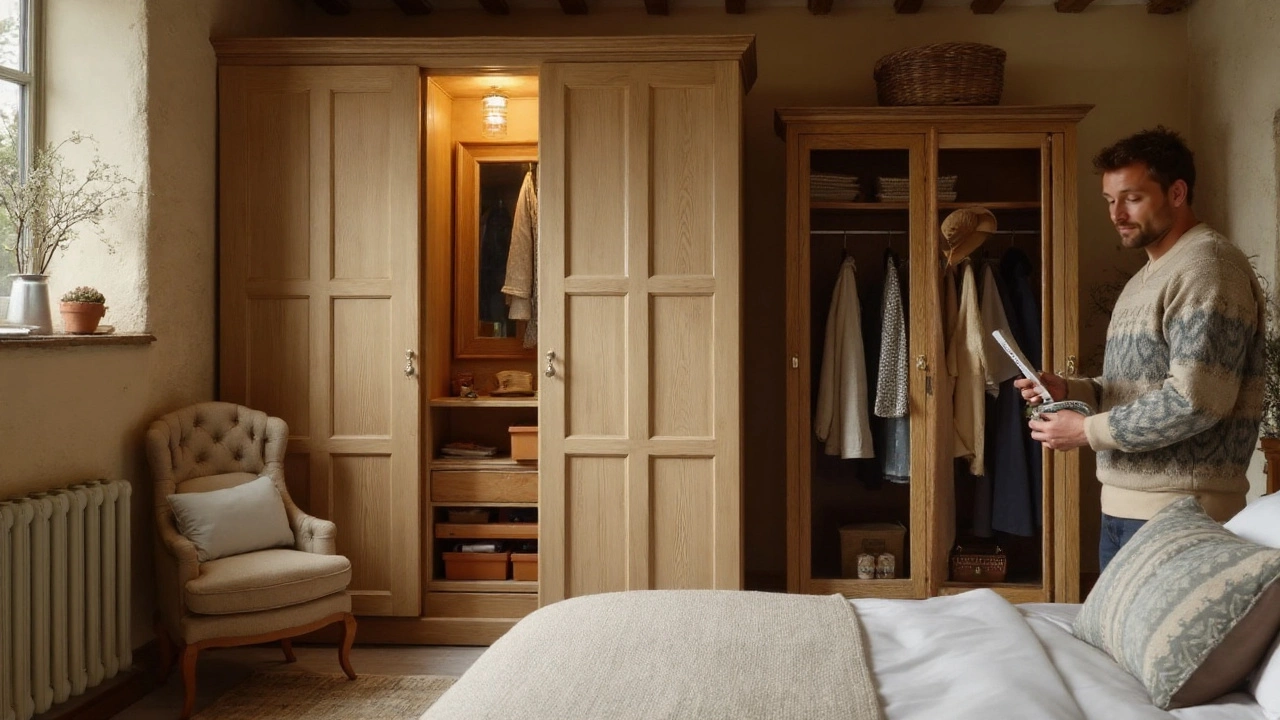
Examples, FAQs, and next steps for NZ homes
Examples that map to real Kiwi rooms:
- Auckland CBD apartment, 2.4 m ceilings, queen bed close to the wall: a 180-200 cm wide sliding-door wardrobe with mirrored doors replaces a separate mirror and saves swing space.
- Grey Lynn villa with high ceilings and native timber: a 110-140 cm solid wood armoire ties in with architraves and can store winter bedding on the top shelf, suits on a short rail.
- Kids’ room in a rental: a 90-120 cm flat-pack wardrobe with anti-tip bracket and laminate finish handles bumps and stickers; shelves for folded uniforms, rail for jackets.
- Guest room/home office: a compact armoire with shelves now, rail later. Flexible if the room’s role changes.
- Townhouse with narrow stairs: choose a wardrobe that comes apart into panels; ask the store to confirm the largest piece size in writing.
Mini‑FAQ
- Are wardrobe and armoire just different words for the same thing?
Not exactly. A wardrobe is a storage system focused on clothes, often modular or built-in. An armoire is a freestanding cabinet with a traditional furniture form. Stores blur the terms, but the hinge style, interior, and look usually give it away. - Can I use an armoire as a TV cabinet?
Yes, many armoires were re-purposed for media. Check interior width and plan for cable management and ventilation. Hinged doors can hide the screen in a living room. - What depth do I need for adult hangers?
Aim for 55-60 cm internal depth. Under ~52 cm squashes shoulders and sleeves. - Do armoires ever have sliding doors?
Almost never. Sliding doors need tracks and overlap panels; that’s a wardrobe thing. - What’s a chifforobe?
It’s a hybrid-part chest of drawers, part hanging space-common in early 20th‑century designs. Think wardrobe + dresser in one piece. - How do I stop moisture damage in Auckland’s winter?
Keep indoor RH around 40-60%, allow airflow behind the unit, and open doors now and then. A small dehumidifier on wet days helps. Avoid pushing the back tight to a cold exterior wall. - Any safety standard I should care about?
Ask for an anti-tip kit and secure into a stud. New Zealand EQC guidance supports anchoring tall furniture due to quake risk. Check that finishes are low-VOC if you’re sensitive to smells.
Next steps by scenario
- Renter on the move: pick a 100-150 cm wardrobe with sliding doors and adjustable shelves. Keep the packaging for your next move. Use removable adhesive only for cord clips; anchor with a stud where allowed.
- Homeowner planning long term: invest in a modular wardrobe system with soft-close hinges and a mix of rails and drawers. If you crave character, add an armoire to the guest room or hallway for linen storage.
- Period-home lover: choose an armoire in solid wood that matches your skirting height and door profiles. Ask a finisher to colour-match to your floors. Leave 2-3 cm breathing room to the wall to avoid condensation marks.
- Small-space minimalist: a mirrored sliding wardrobe doubles as a full-length mirror and brightens the room. Add pull-out trays for accessories and a valet hook inside the door.
- Family with kids: durable laminate wardrobe fronts, soft-close hinges, interior lighting, and a lockable drawer for meds. Anchor it. Teach kids to keep doors shut to avoid finger pinches.
Troubleshooting quick fixes
- Doors won’t align: level the feet, then adjust hinges at the top and bottom. Tiny changes matter on tall panels.
- Hangers hit the doors: move the rail forward if adjustable; if fixed, add slim-profile hangers to buy a centimetre.
- Musty smell: empty shelves, wipe with diluted white vinegar, dry, then leave a bowl of baking soda for 24 hours. Improve airflow behind the unit.
- Armoire too heavy to move: empty it first, remove doors if you can, and slide on moving blankets. Don’t drag bare feet on timber floors.
- Hinged doors block the bedside lamp: fit a door stay to limit swing or reconfigure the room layout by 10-15 cm-often enough.
If you remember one thing, make it this: choose for the room you live in, not the showroom. Measure twice, check door swing, plan the inside for your actual clothes, and secure the piece to the wall. Do that, and either a disciplined wardrobe or a character-rich armoire will serve you well for years.
